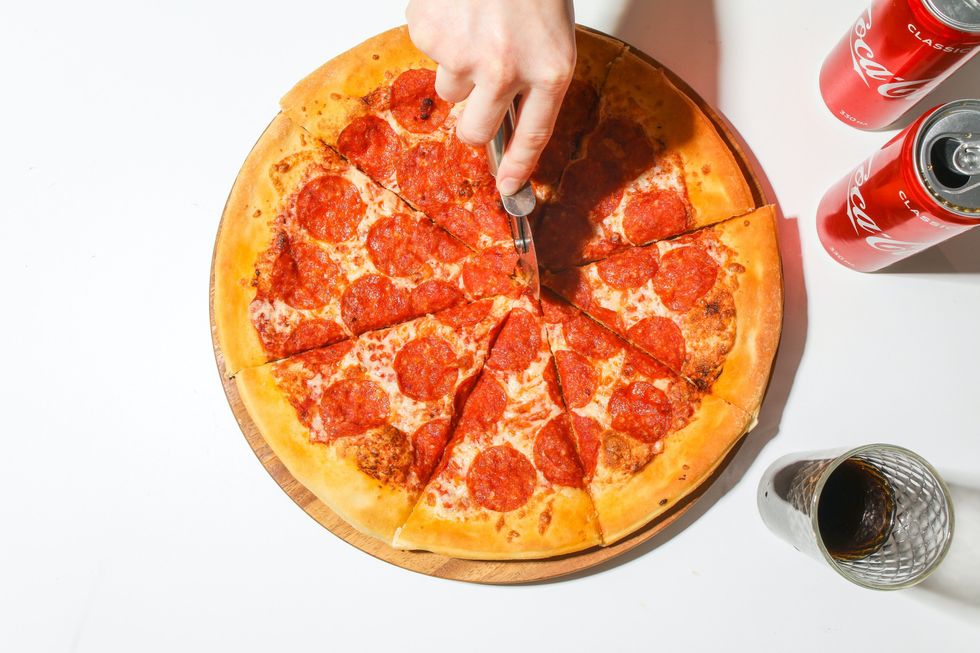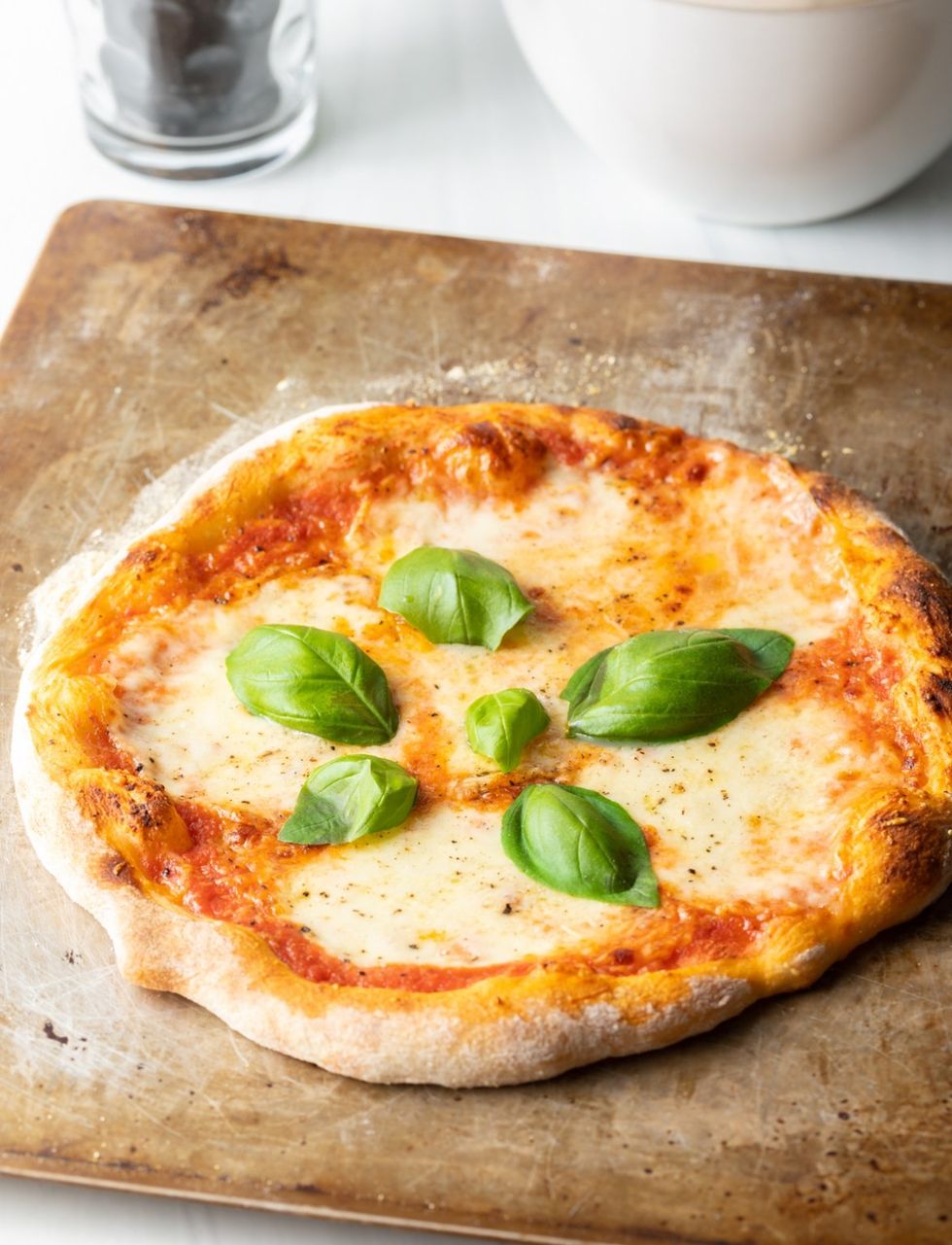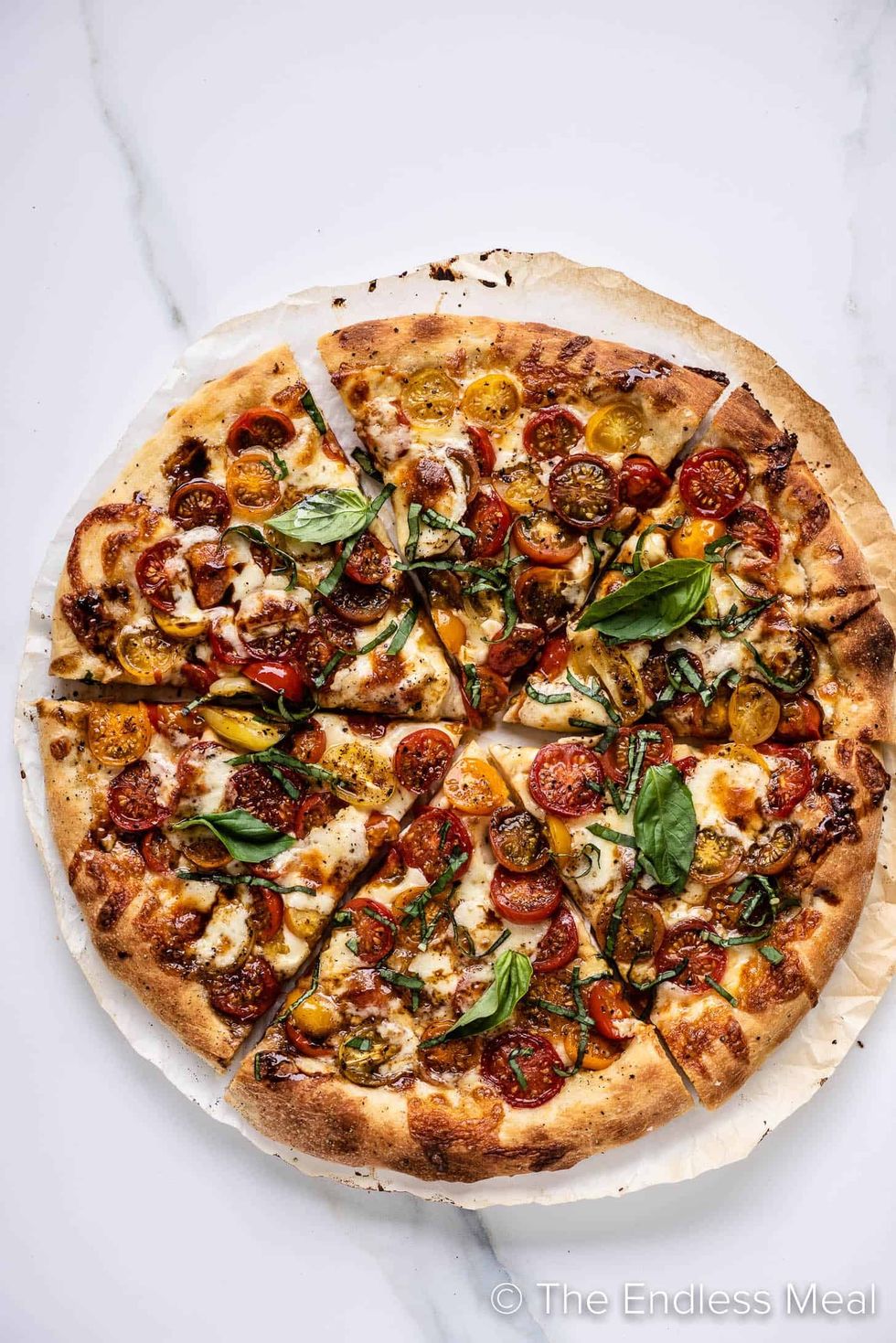Carbs and cheese only, please.
A Brief History Of Pizza – How The Cheesy Feast Was Invented

Meredith Holser is B+C's resident affiliate writer. Meredith enjoys writing about a range of topics, but she's adopted e-commerce writing in all its many facets. Outside of work, you can catch Meredith hiking, trying new recipes, and dreaming about having a yummy little treat.
Ah, pizza.
In its simplest form, pizza is carbs, cheese, and tomato sauce – but really, it’s so much more than that. Pizza’s a shapeshifter, molding and twisting into various shapes, sizes, and thicknesses. Pizza is obliged to find friends in a plethora of toppings like bell peppers, mushrooms, pepperoni, red onion… the list goes on and on and on. Pizza is agreeable with practically everyone, not only because it’s gotten the plant-based and gluten-friendly treatments, but because it’s just damn good. But where *exactly* does our favorite greasy midnight snack come from? What’s its story?
We’re diving into food histories to fuel the curiosity behind the foods that fuel you. Stay tuned for more!The Early Days of Pizza
Flatbreads were fetch for centuries – they were part of the poor man’s diet since they were simple and easy to scarf down.
Pizza’s story begins in Italy – Naples’ urban sprawl in the late 18th century resulted in massive population growth, especially for lower-class populations that craved savory pies. Lower-class workers needed to get their hands on cheap, good food, and pizza was the definite answer. Well, sort of. It wasn’t exactly pizza yet – think thin, more flatbread-y discs with oil and limited toppings.
Pizza wasn’t really pizza until late 18th century Italians slapped some tomato sauce on the flatbread. And thank god for them, because otherwise we might’ve not known the great classic pizza. After that, the rest of Europe was fairly hesitant to adopt pizza, since they believed most fruits in the tomato family were poisonous. Slowly over time, this belief evaporated and pizza spread even wider.
The very first pizza flavors that came about were absolute classics: the pizza marinara and pizza margherita. The marinara got slathered in tomato, oregano, garlic, and extra virgin olive oil. You’re likely familiar with margherita’s iconic build – basil, tomato, and mozzarella cheese. That’s the beauty of pizza. It can be customized in endless ways!
Pizza in America

Photo by Polina Tankilevitch / PEXELS
America’s first encounters with good old ‘za didn’t happen until the late 19th century when Italian immigrants arrived with their cuisine. Based on a number of conflicting accounts, it’s unclear whether the first U.S. pizza shop was in Chicago or New York. Despite the ongoing battle of which is better between the two, we’re glad both styles of pizza exist.
Soon enough, U.S. pizza shops became more and more common, serving hungry workers in booming cities and suburbs. But this growth also stabbed at real, authentic, Italian pie – many entrepreneurial Americans weaved their way into the pizza biz, oftentimes adapting to purely American tastes by offering, well, Americanized pizza.
They made twists on tradition: New York-style, deep-dish, the Rocky Mountain pie, Chicago-style, and Hawaiian pizzas were frequently served up, and of course, everything changed when these takes were made more convenient with frozen varieties and modernized delivery services from chain stores. And with that, we got the pizza we all know and love.
Pizza Recipes
Craving pizza now? Here are a few recipes inspired by the real thing to try!
Perfect Neapolitan Pizza

Image via A Spicy Perspective
This simple pie is characterized by a thin crust, light layers of cheese and tomato sauce, and gets topped off with fresh basil leaves. (via A Spicy Perspective)
Pan Pizza

Image via Most Hungry
'Za can be a total lazy food, and this recipe enables the laziness even further. It requires zero kneading action – instead, pile on all the toppings you want and let this baby bake to perfection. (via Most Hungry)
Easy Summertime Caprese Pizza

Image via The Endless Meal
This dough dons *heaps* of fresh tomatoes that balance out immaculately with the tangy, homemade balsamic reduction. (via The Endless Meal)
Sign up for our newsletter for more food histories!












































































